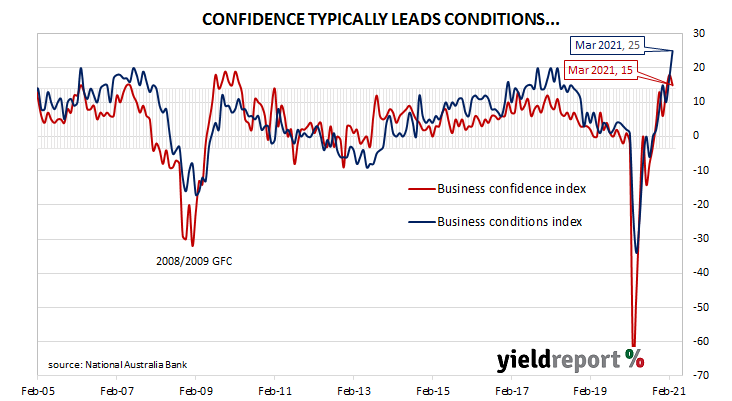Summary: Business conditions improve in March, hits record high; confidence slips but still elevated; impact of end of JobKeeper likely to be “short and limited”; broadly based across states, industry groups; “ongoing strength” expected; capacity usage rate increases again; implies further falls in jobless rate.
NAB’s business survey indicated Australian business conditions were robust in the first half of 2018, with a cyclical-peak reached in April of that year. Readings from NAB’s indices then began to slip, declining to below-average levels by the end of 2018. Forecasts of a slowdown in the domestic economy began to emerge in the first half of 2019 and the indices trended lower, hitting a nadir in April 2020 as pandemic restrictions were introduced. Conditions have improved markedly since then and NAB’s indices are both back at elevated levels.
According to NAB’s latest monthly business survey of over 400 firms conducted over the second half of March, business conditions improved. NAB’s conditions index registered 25, a record high, and considerably higher than February’s revised reading of 17.
Business confidence slipped modestly and NAB’s confidence index declined from February’s revised reading of 18 to 15. Typically, NAB’s confidence index leads the conditions index by approximately one month, although some divergences have appeared in the past from time to time.
“The March NAB business survey confirms our expectations that the impact of the end of JobKeeper on the economic recovery will be short and limited and gives us more confidence in a strengthening business investment outlook,” said ANZ senior economist Catherine Birch.

In the cash futures market, expectations of a change in the actual cash rate, currently at 0.03%, remained fairly stable. At the end of the day, contract prices implied the cash rate would inch up slowly to around 0.11% by July 2022.

